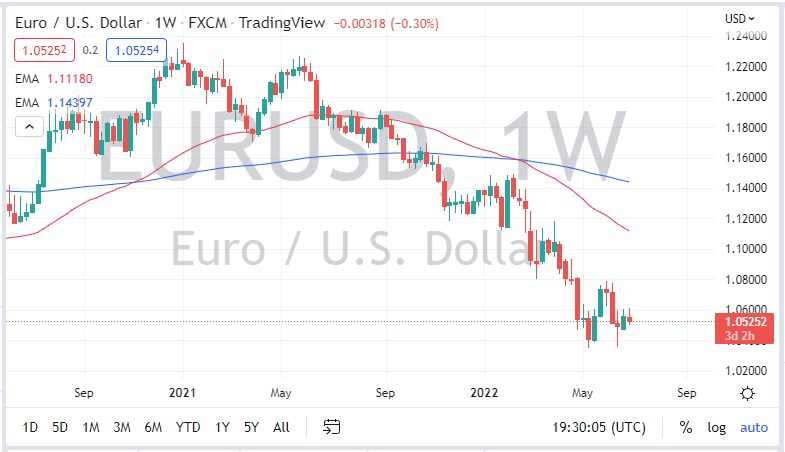The euro continues to look very lackluster as the month of June continues to see sellers jump in every time the market tries to break above the 1.06 level. Beyond that, the 1.08 level also offers resistance, so to think that the month of July is going to be easy for the common currency is probably a bit of a stretch. In fact, it’s not until we break above the 1.08 level that the buyers have any real strength, and even then, I think that there are plenty of opportunities for short-sellers to jump into this market.
When you look at the central bank divergence, meaning that the Federal Reserve is looking to tighten monetary policy rather aggressively, while the European Central Bank is probably going to be a bit more casual about it. The pair should continue to draw from here, perhaps reaching down to the 1.04 level again, and then the 1.02 level. Sometime this summer, I would not be surprised at all to see the euro reach the parity level against the United States dollar, but I don’t know if it happens in the month of July. Typically, July tends to be a rather quiet month, so I think it is more likely than not that we will be in more of a consolidation type of situation.
The Federal Reserve is anticipating raising interest rates at least 50 basis points this month, and then again at the next meeting. In contrast, the ECB is likely to raise interest rates by 25 basis points, followed by another 25 basis points. The situation in the European Union is much different than the United States, as there is a major energy problem in the EU, as it now find itselfs scrambling to provide power to its citizens. Because of this, the tightening cycle of the EU is more likely than not going to be very short.
It has become apparent that in the United States the number one problem is inflation, so the tightening cycle will not only continue, but it may become rather aggressive. In fact, Fed fund futures are starting to suggest that we may even see a 75 basis point rate hike in July, so this will still favor the greenback. As a general rule, the greenback is bought in times of uncertainty, which is where we find ourselves now.

